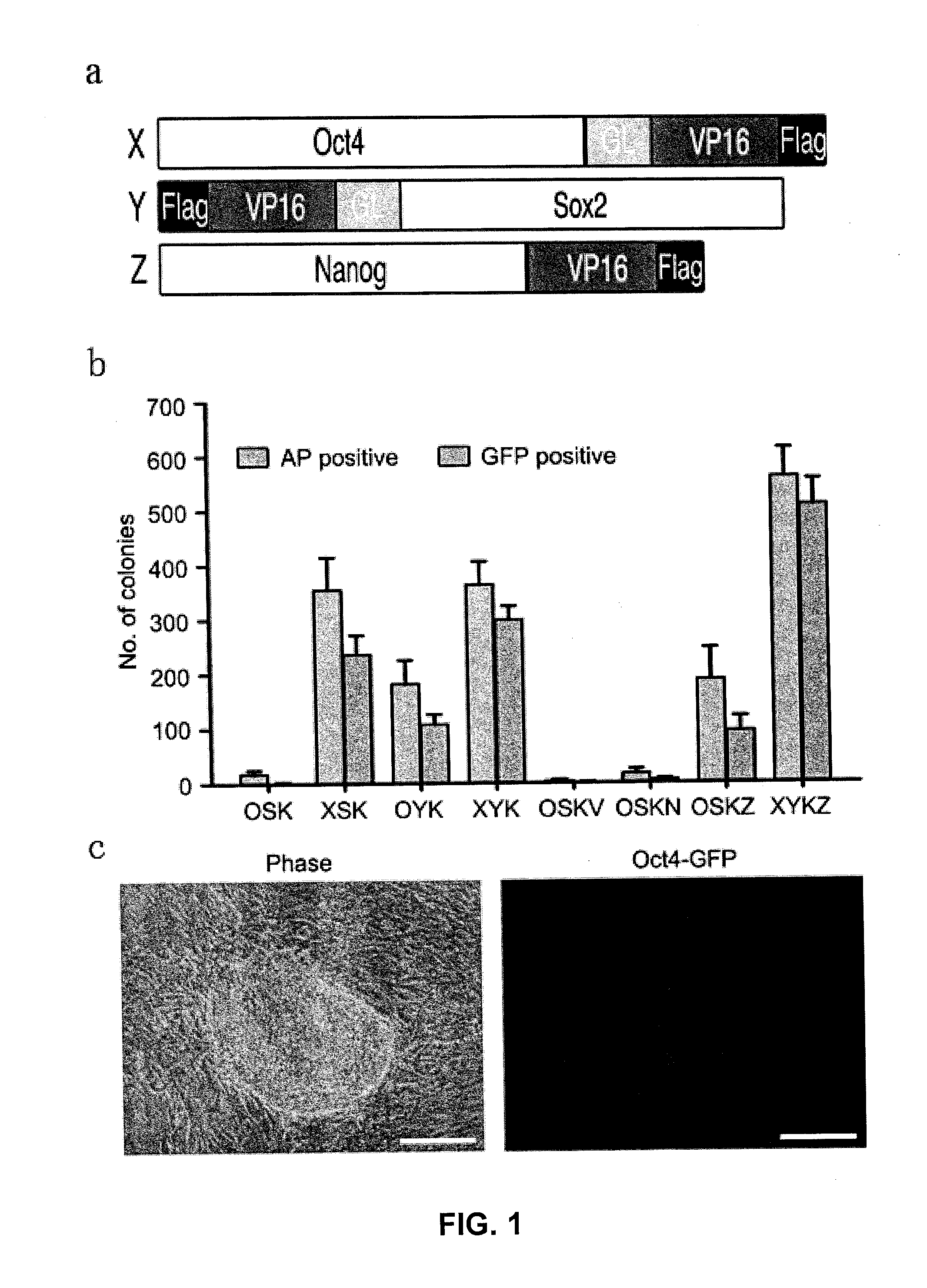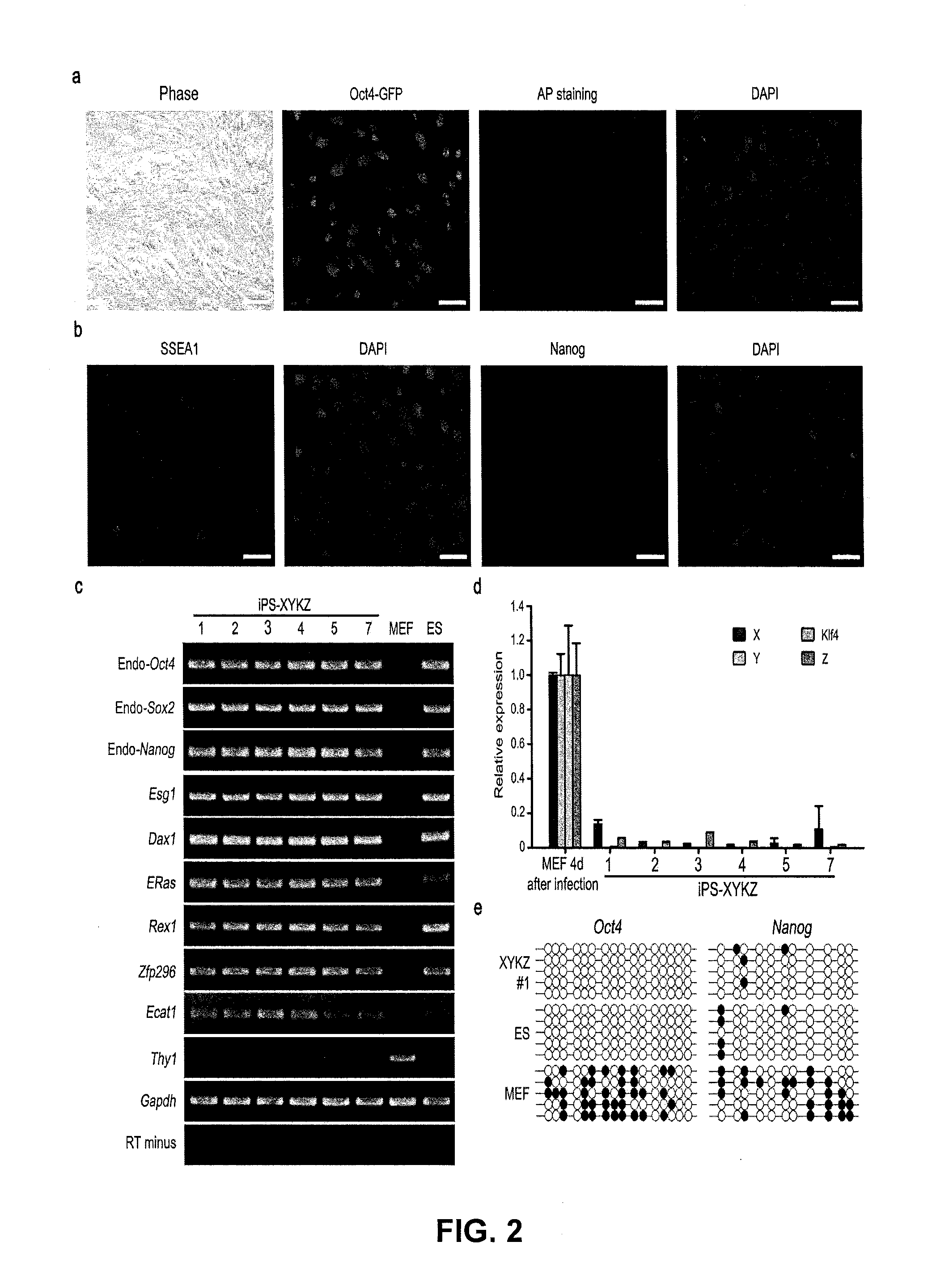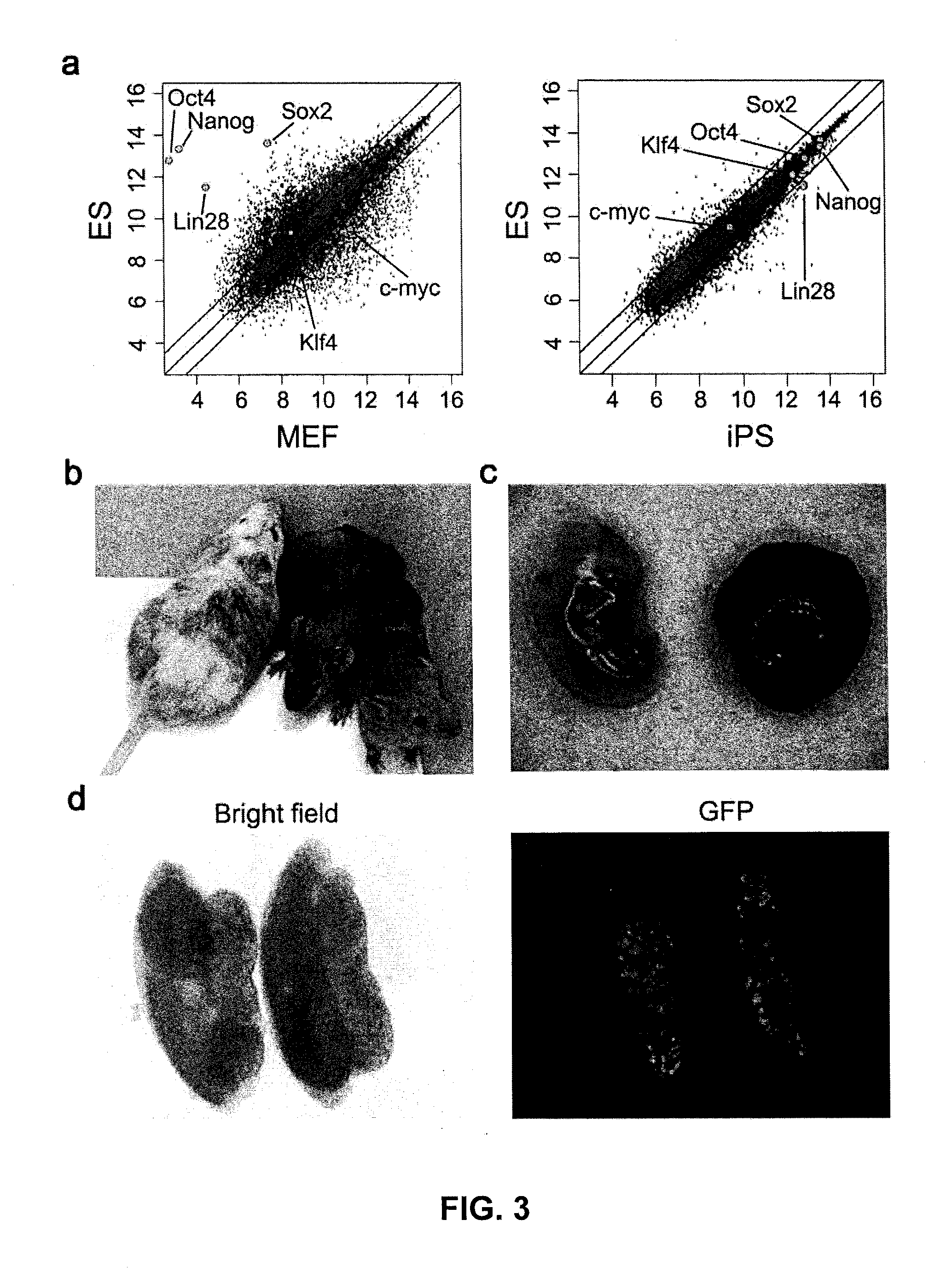Inductive production of pluripotent stem cells using synthetic transcription factors
a technology of transcription factors and stem cells, applied in the field of pluripotent stem cells, can solve the problems of low efficiency of nuclear transplantation, difficult to find human embryonic stem cells, patient-specific stem cells, etc., and achieve the effect of high efficiency
- Summary
- Abstract
- Description
- Claims
- Application Information
AI Technical Summary
Benefits of technology
Problems solved by technology
Method used
Image
Examples
examples
Materials and Methods
[0119]Plasmid construction: The fusion of cDNA encoding mouse and human Oct4, Sox2 and Nanog and encoding VP16 transcription activator domain (VP16 446-490 amino acids, from MLGDG to DEYGG) with or without glycine-rich linker, was cloned into retroviral vector pMXs (Takahashi and Yamanaka, 2006) and lentiviral vector pLV-TRE-EF1a-GFP capable of inducible expression (Wu et al., 2009). To construct episomal plasmids used for iPS induction, DNA encoding OCT4-VP16 (X), KLF4, SOX2-VP16 (Y) and NANOG-VP16 (Z) are connected through 2A elements, and then cloned into epsisomal plasmid vectors pCEP4 (Invitrogen) to produce pCEP4-XKYZ.
[0120]Cell culture: Maintain mouse ES cells and iPS cells in DMEM (Invitrogen) on mouse embryonic fibroblast feeder layer (MEF) treated with mitomycin C. DMEM is added with 15% heat-inactivated fetal calf serum (FBS, Invitrogen), 2 mM L-glutamine, 0.1 mM non-essential amino acids, 1 mM sodium pyruvate, 0.1 mM β-mercaptoethanol (Sigma), 1000 u...
PUM
| Property | Measurement | Unit |
|---|---|---|
| Acceleration | aaaaa | aaaaa |
| Composition | aaaaa | aaaaa |
| Inductive effect | aaaaa | aaaaa |
Abstract
Description
Claims
Application Information
 Login to View More
Login to View More - R&D
- Intellectual Property
- Life Sciences
- Materials
- Tech Scout
- Unparalleled Data Quality
- Higher Quality Content
- 60% Fewer Hallucinations
Browse by: Latest US Patents, China's latest patents, Technical Efficacy Thesaurus, Application Domain, Technology Topic, Popular Technical Reports.
© 2025 PatSnap. All rights reserved.Legal|Privacy policy|Modern Slavery Act Transparency Statement|Sitemap|About US| Contact US: help@patsnap.com



